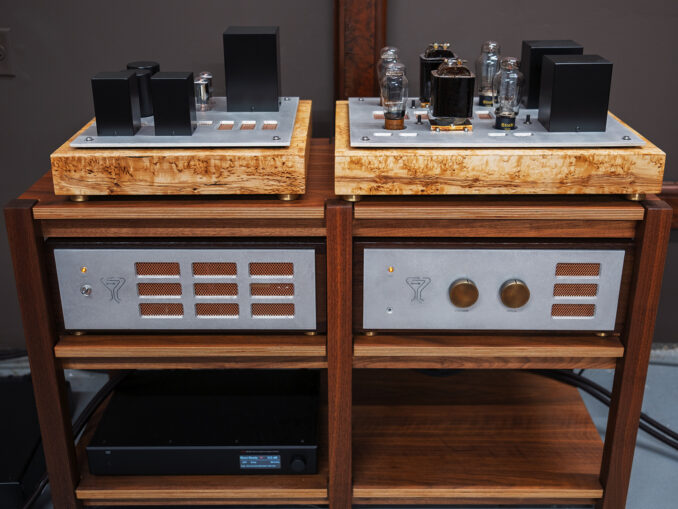
Fans of the complete package—design, craft, engineering, performance and quality—can spot many of these traits built into the Treehaus Audiolab The Preamplifer and 300B-2 SET Amplifier from a listening seat away.
This approach is evident in every product I’ve seen and heard from Treehaus including their ‘Phantom of Luxury’ Field Coil Loudspeakers which I reviewed last year. There’s more than a nod to hifi’s rich history coupled with carefully designed and crafted products that employ both classic elements and new technology in sumptuous packages wrapped in wood and metal.
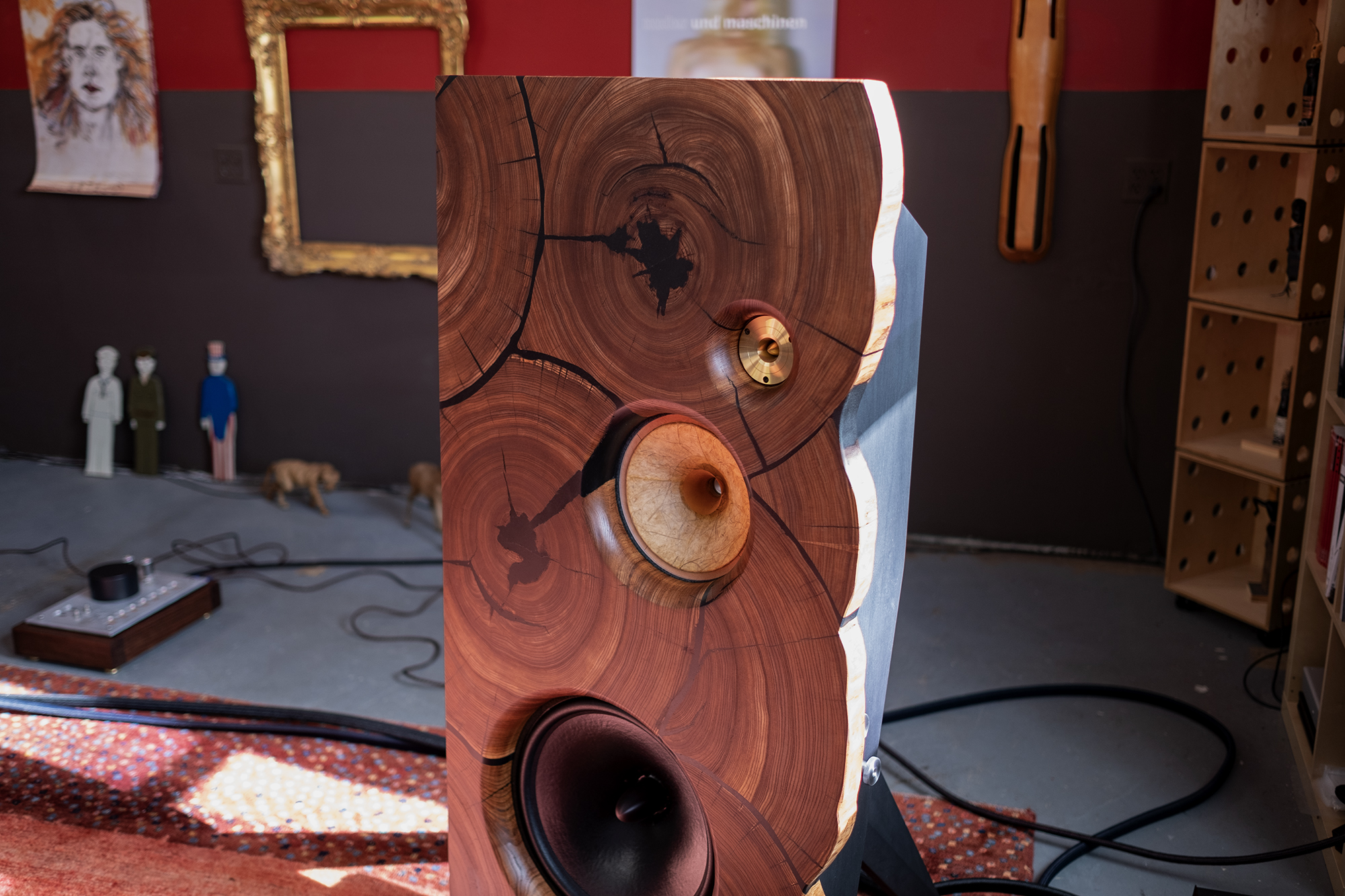
But the real merit of any piece of hifi kit also includes its ability to turn recorded music into an in air and in ear experience that rivals the real. I paired the Treehaus pre/power combo with the review DeVore Fidelity O/Bronze for this review (more info), as well as the review Weiss Helios DAC (more info), a system that handled this transformation expertly, as if all together they conspired to give me the kind of sound I crave, the kind of reproduction that makes sounds and music feel as real as the occasional Barn cricket or crow. (see full system and Barn details)

The Preamplifier is a line-level preamp, Treehaus also offers their ‘The LCR’ Phono Preamplifier for vinyl people, housed in two chassis separating the power supply from its directly-heated triode-based pre-amplification. The review Preamplifier came with the optional remote volume control, a simple elegant device.
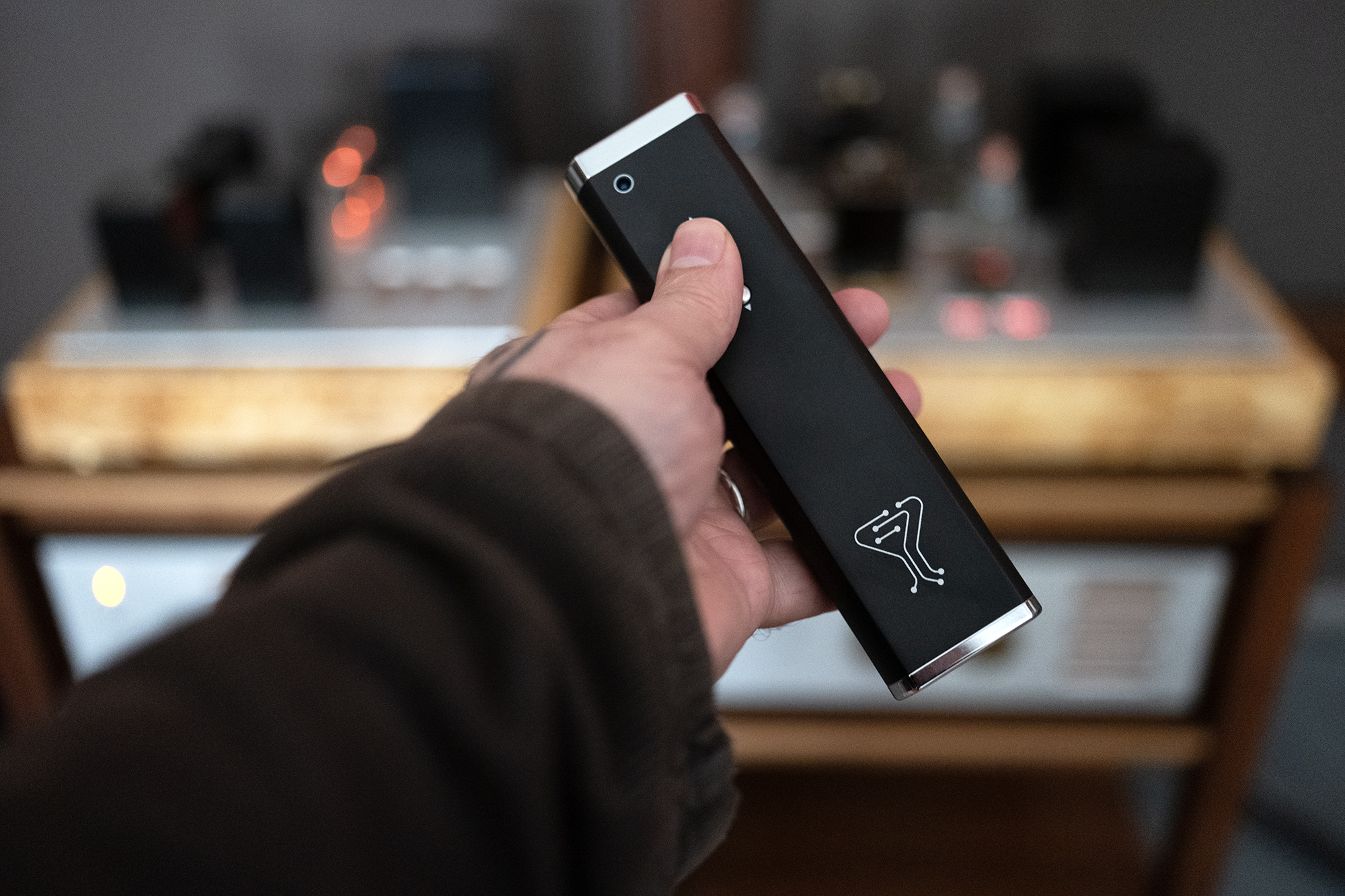
From Treehaus:
Volume control is performed through a TVC (Transformer Volume Control). A pair of Finemet transformers and a multi-position rotary switch simply alter the input signal’s ratio of voltage to amperage. This method does not dispose of any sonic information as it attenuates the audio signal to the preferred listening level. Music does not lose any detail or energy, regardless of listening level.
The properly attenuated signal is then sent to the amplification stage using the 4P1L directly-heated vacuum tube in triode configuration. The 4P1L has a low plate resistance is ideally suited to make a low output-impedance preamplifier. The sound is clear and clean with the pleasing predominant 2nd harmonic. The tube is run in filament-bias mode, with the filament supply provided by a Coleman regulator. This has the advantage of using a very low value resistor to bias the tube and therefore there is no need to decouple it with a capacitor. The entire gain stage is completely free of coupling or decoupling capacitors, yielding a sound uncolored. Custom made output transformers using Finemet cores complete the signal path. The Treehaus Preamplifier essentially is a SET amplifier in design philosophy.
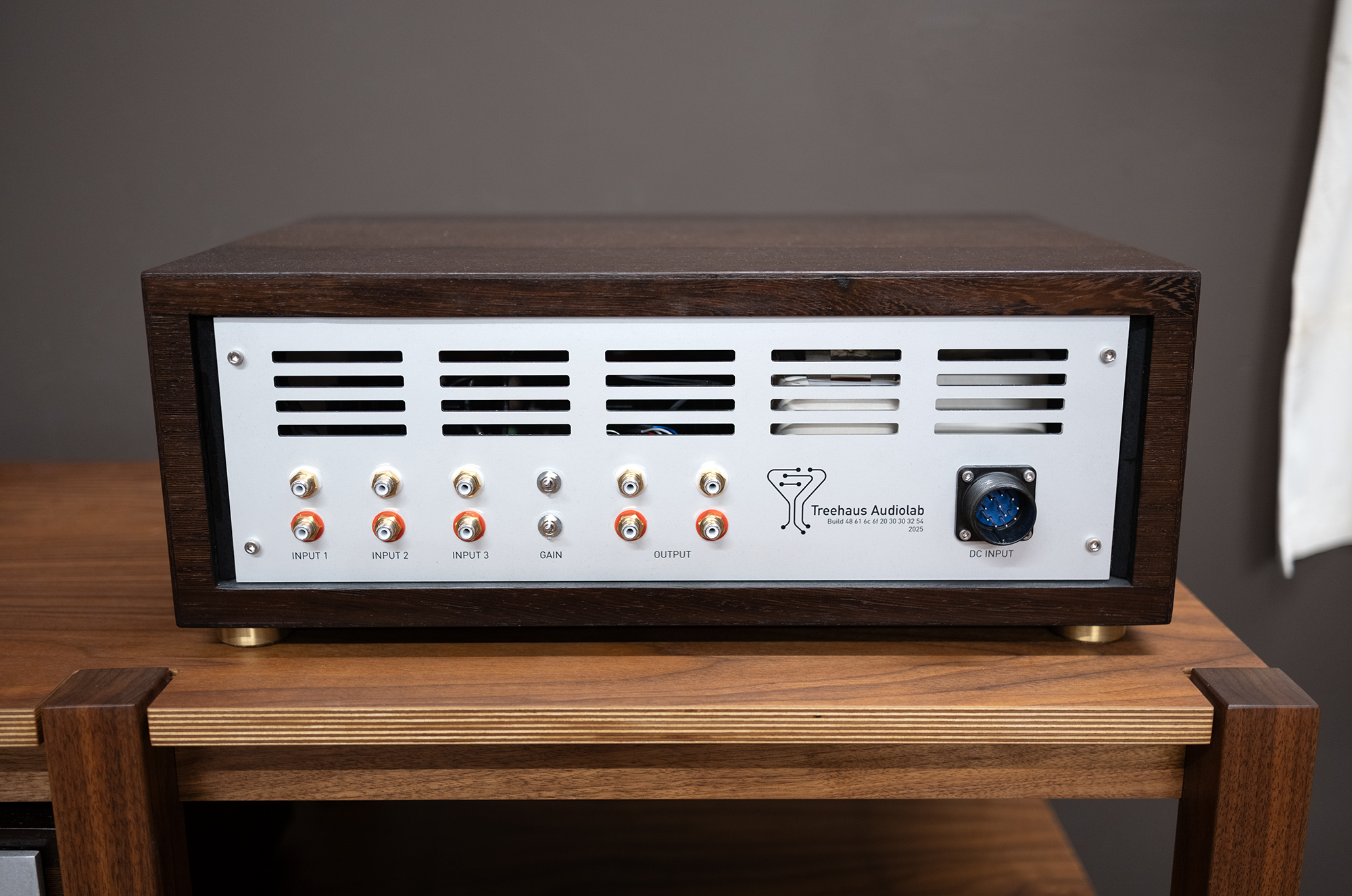
The Treehaus Preamplifier comes with up to 5 Cardas RCA Single-Ended inputs based on the buyer’s needs and two pair of Cardas RCA single-ended outputs. An included umbilical cable ties pre to its external power supply. There are a pair Gain switches to adjust the output for 6.5dB or 13dB of gain to help match your system’s needs. The review Preamplfiier is finished in the “Kinsuido style”.
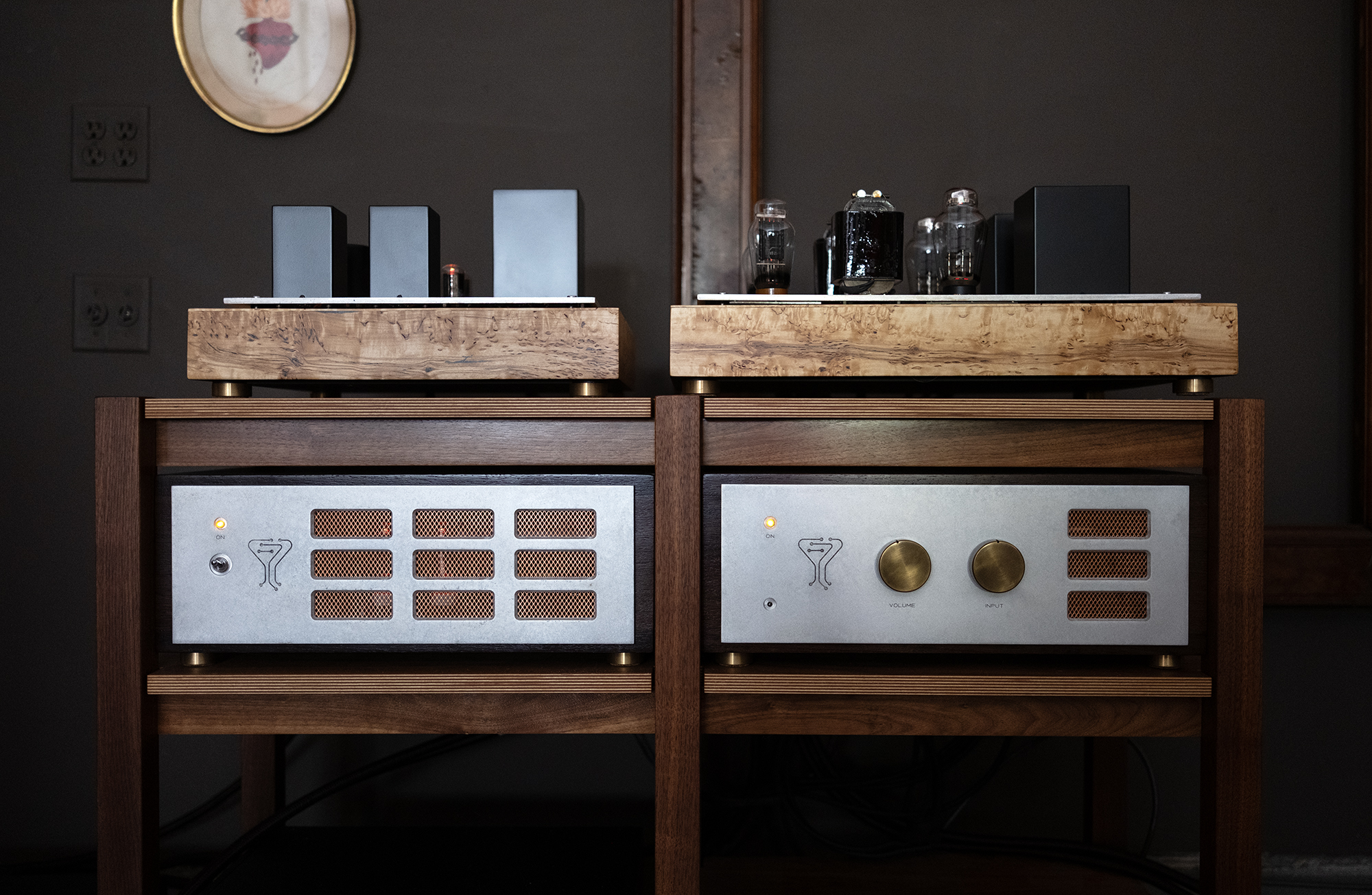
From Treehaus:
The Kinsuido design possesses hardwood veneer cases over Baltic Birch, with 5mm oxidized aluminum faceplate and patinaed brass knobs to complete the aesthetic. The A/Machines design uses vintage-looking large dials, Simpson gauges, black inset panels and hammertone cases.

I recommend a visit to the Treehaus website where you can learn much more about what’s inside The Preamplifier and 300B-2 amp. Here’s an example of The Preamplifier:
The properly attenuated signal is then sent to the amplification stage using the 4P1L directly-heated vacuum tube in triode configuration. The 4P1L has a low plate resistance is ideally suited to make a low output-impedance preamplifier. The sound is clear and clean with the pleasing predominant 2nd harmonic. The tube is run in filament-bias mode, with the filament supply provided by a Coleman regulator. This has the advantage of using a very low value resistor to bias the tube and therefore there is no need to decouple it with a capacitor. The entire gain stage is completely free of coupling or decoupling capacitors, yielding a sound uncolored. Custom made output transformers using Finemet cores complete the signal path. The Treehaus Preamplifier essentially is a SET amplifier in design philosophy.
The 4P1L produces incredible sound, however, like many vintage tubes in some instances this tube can be found to be microphonic. We have carefully engineered the preamplifier to mitigate this issue. Working closely with edenSound, we have utilized their proprietary engineered polymer TerraStone to create an isolation layer within the signal enclosure. The main signal board is mounted to a TerraStone plinth, which in turn is mounted to the chassis through isolation bushings. This eliminates any chassis vibration entering the 4P1L through the tube socket. To mitigate vibration transmitted directly into the tube from the glass, edenSound IsoDamp tube dampers provide both mechanical and EFI shielding to the tubes. Finally, we offer edenSound TerraCones footers for yet another layer of mechanical isolation. We feel the sound the 4P1L offers is worth the effort.
As I said, carefully designed and crafted.
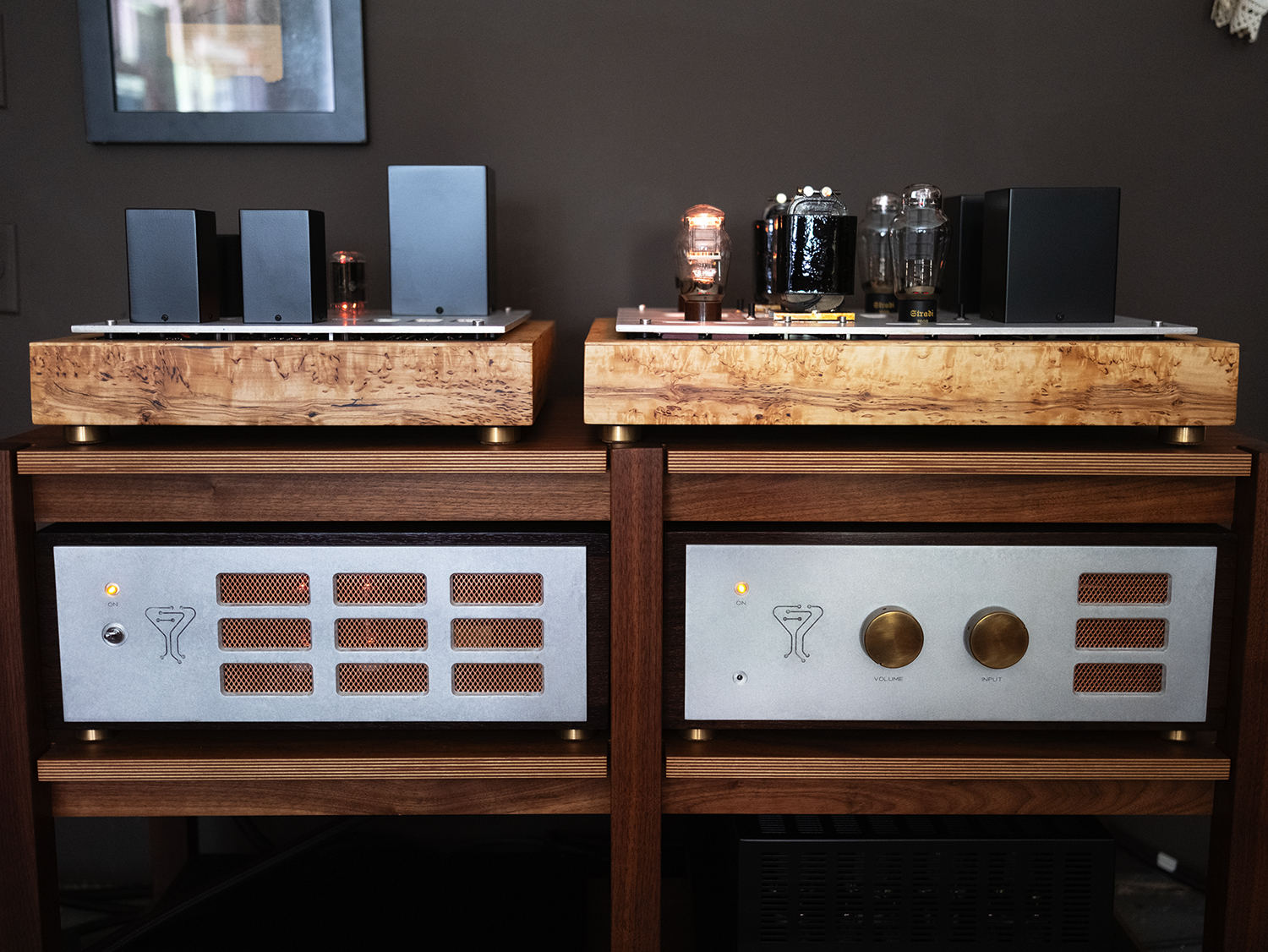
Treehaus makes three 300B-based amplifiers—the 300B-1, 300B-2, and 300B-4. Can you guess what the numbers mean? Yup, number of chassis. The Treehaus 300B-2 is another two chassis design with the power supply residing in its own matching home. The four potentiometers and meters you see up top are for adjusting the Coleman Filament Regulators (for ‘heating Directly-Heated Electron Tubes’), a process that sets the tube filament within +/- 3% of the desired voltage to ensure good sound and long tube life.
From Treehaus:
The 300B-2 Amplifier separates the signal section and power supply section into two enclosures. It utilizes a Directly Heated Triode (DHT) driver interstage transformer-coupled to another Directly Heated Triode acting as the power tube. This design is based on the work of the Japanese master-of-the-art Susumu Sakuma, with a deep reference to the earliest Western Electric designs. Sakuma recognized the symbiotic sonic relationship that forms when a DHT drives a similar DHT. The pleasing distortions of the second harmonic are enhanced while less desirable harmonics are minimized in this configuration. The architecture yields one of the purest expressions of what vacuum tubes can offer the listener.
We chose to use the 10/ 801A series of tubes for the driver: This tube is extremely clean sounding, offers a strong amplification factor within the DHT family, and with quite a few varieties, allows for some unique tube-rolling opportunity.
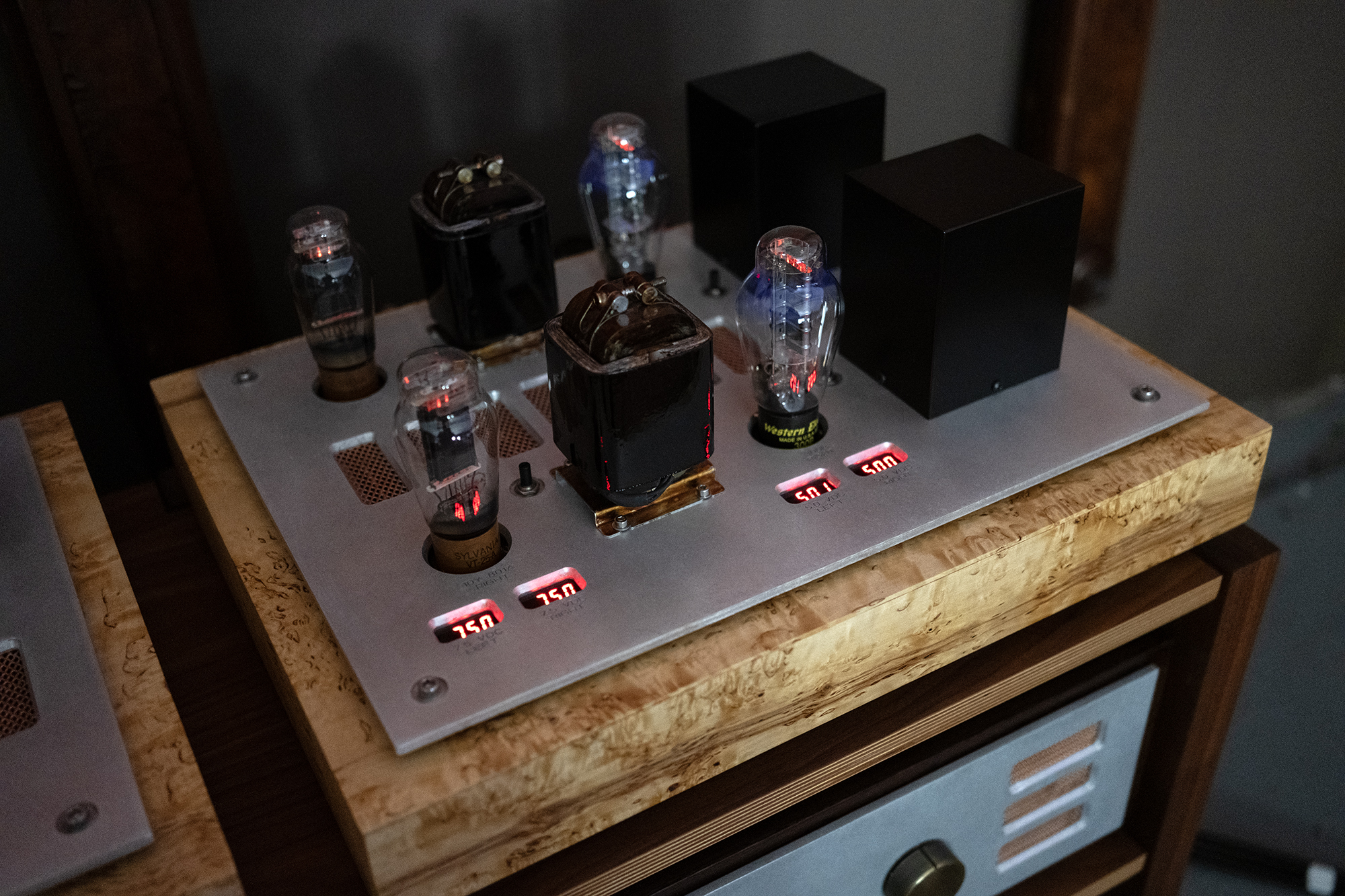
I will talk about some tube rolling as Treehaus included Western Electric and Stradi 300Bs as well as pairs of NOS VT-25A and 801A driver tubes. This process involved using those potentiometers while looking at the associated meter to dial in the correct voltage for each tube’s filament, a simple and oddly pleasing process in its smooth fine-grained accuracy.
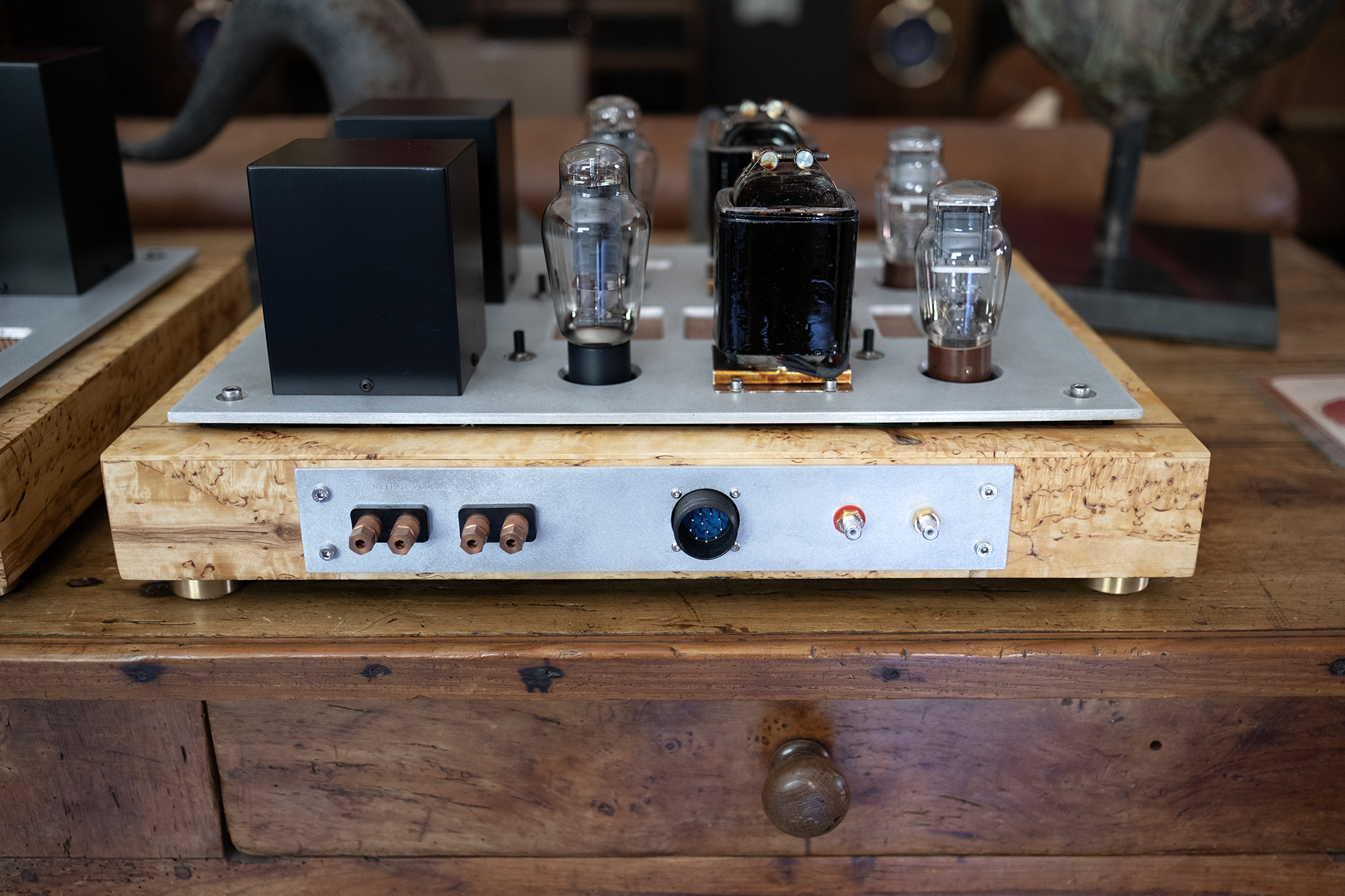
The 300B-2 offers a pair of Cardas RCA single-ended inputs, one pair of Cardas speaker binding post, and an input for included umbilical cable to tie to the power part.
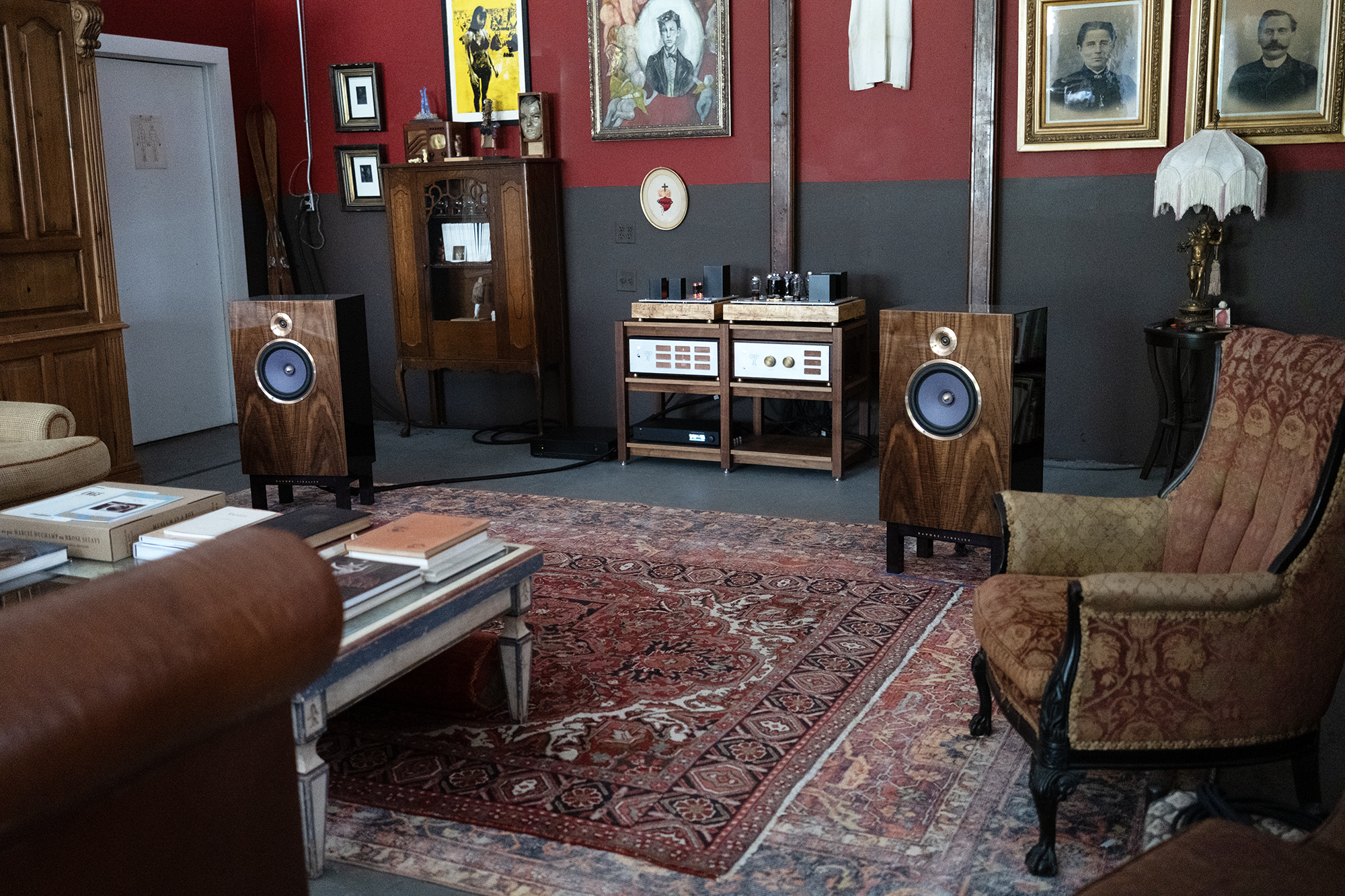
Regular readers may know that the Treeahus combo is the third 300B-based amp I reviewed this summer, a group that also included the Audio Hungary Qualiton 300B Integrated Amplifier (review) and the Audio Note Meishu Phono 300B Konzertmeister Integrated Amplifier (review). I mention this to highlight the fact that all 300B-based do not sound the same. Hell, even the same amp using different tubes do not sound the same but the differences from amp to amp, especially if we account for everything that makes an amp an amp (and preamp), are too long to get into here.
In a very general sense, the Qualiton amp focused sound more on impact and drive from its 28 Watts of push/pull power, the Audio Note combined impact and superb touch and tone, while the Treehaus combo opened up the sound image to a much greater degree with improved refinement while retaining the impact of the Qualiton amp combined with the drive and superb tone of the Audio Note. Hello Goldilocks.
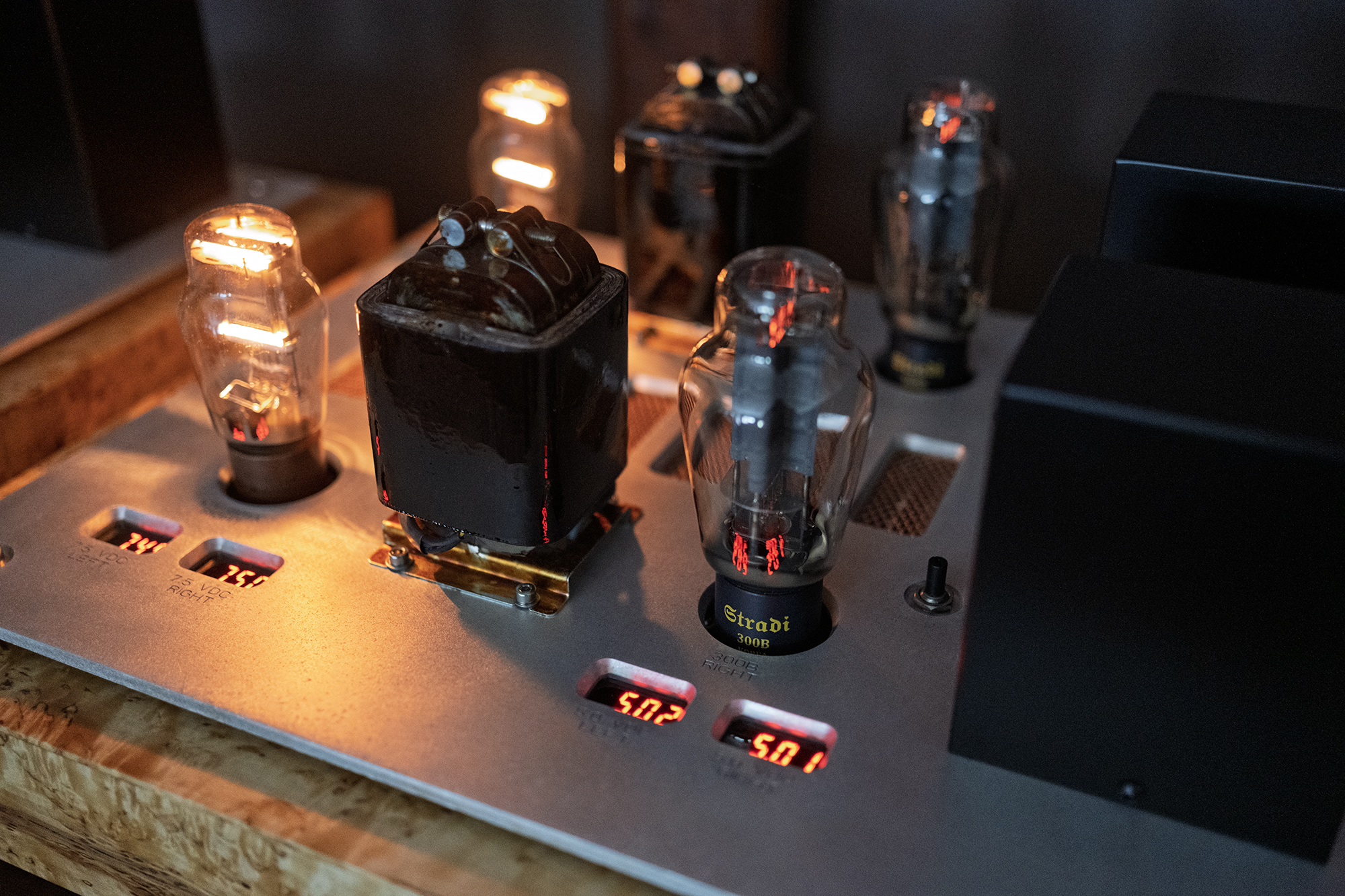
Or to put it more concisely, the Treehaus combo offered the most complete and compelling package according to my preferences that take everything into account. While some may be thinking these are not apples to apples comparisons seeing as the Qualiton costs significantly less than the Treehaus and Audio Note and the Treehaus separates are not a fair comparison to the integrated Audio Note, I agree on the Qualiton but seeing as the Treehaus combo costs $11,000 less than the Audio Note, I’d say we’re OK.
The last 2 minutes of “Conversion” from Nick Cave & the Bad Seeds latest Wild God is among the most uplifting 120 seconds of music according to my heart’s response. As the music builds and grows with massed voices and a touch of mayhem, Cave croons over the top:
Oh, you’re beautiful
You’re beautiful again
You’re beautiful, you’re beautiful
You’re beautiful, you’re beautiful
Stop, stop, stop, stop
It’s here, amid the waves and repetition I can nearly feel my spirits rising, as if gravity itself has given up its hold. This is thick, layered, and dense music with Cave’s vocals initially buried in the rest until he moves forward in the mix with each “you’re beautiful” repetition. I had the great fortune to see this performed live at the Barclay’s Center and it was as close to an ecstatic experience I’ve had in a good long while.
And this system, Treehuas / DeVore / Weiss, brought out the raw emotive force of “Conversion” in Barn to the point where my adrenaline kicked in. Stunning. The Treehaus combo offers superb clarity and separation along with perfectly saturated tone and chest-pounding dynamics, the full fun house ride that is Nick Cave & the Bad Seeds at their best.
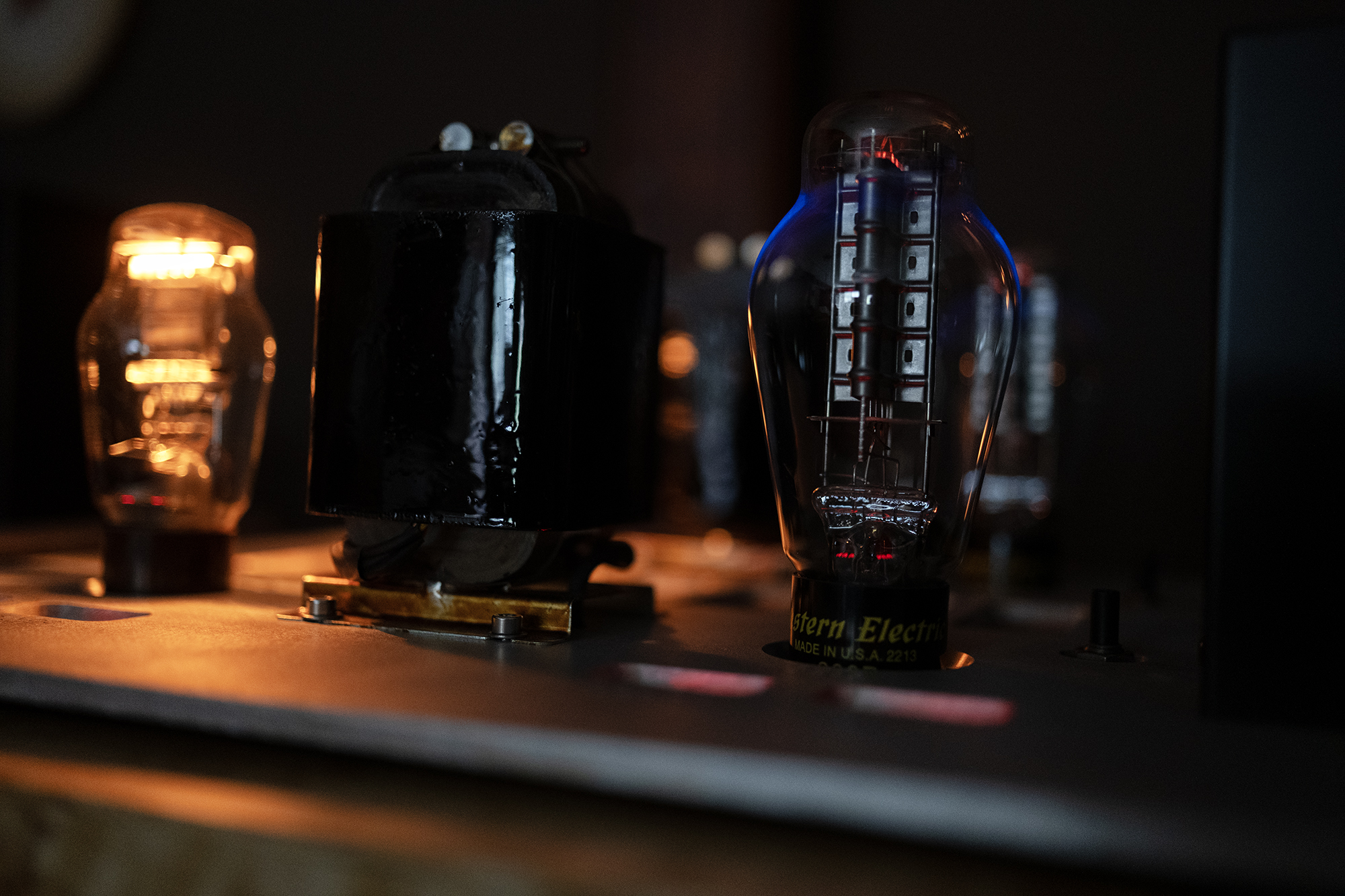
And I may as well get this off my chest right here and now—each morning when I came into the Barn during the Treehaus combo’s near 2-month stay, I’d put my coffee filled thermos and Strand bookstore mug and banana down on my desk, walk over to the Treehaus gear on the B-Side to power it up, and look forward to deciding what music I’d get to enjoy that day. There’s a point with some gear where sound analysis no longer holds sway giving way to pure musical exploration and enjoyment and this system reached that point very early on but I’ll try to do my best to stay focused on why this was the case here in terms of sound qualities.
With that in mind, chief among the Treehaus combo’s strengths are clarity and separation even with dense and not particularly well recorded music like Wild God.
As you can imagine, things get even better with better sounding music. Bon Iver’s ‘happier’ side shines on his latest, SABLE, fABLE released on Jagjaguwar back in April, and the track “Speyside” opens with acoustic guitar that jumps out in the room with starling immediacy and force. With this system powered by the Treehaus combo, I could nearly guess the gauge of the strings Justin Vernon strung his guitar with, so refined, rich and right was its sound in Barn. Whats more, the way that sound resounded in space throughout its lifecycle, strum, ring/overtones, and decay, felt as real and vital as I imagine sitting a few feet in front of the real thing.
As this album progresses, Bon Iver seems to walk away from his signature sound adding other instruments and lighter moods and when he reaches “Everything is Peaceful Love” things get practically effervescent. All the little blips and burbles that help buoy this bouncy music up and then up again felt fully materialized in the Barn’s air, floating me up along with ‘em well above and apart from the speakers. The Treehaus combo also does a great job of throwing out a huge and well defined sound image when the music calls for it. Coupled with its clarity and separation, this makes for a musical experience that’s as easy to fall into as pile of down-filled pillows as there’s no sense of the mechanics of reproduction to break the spell.
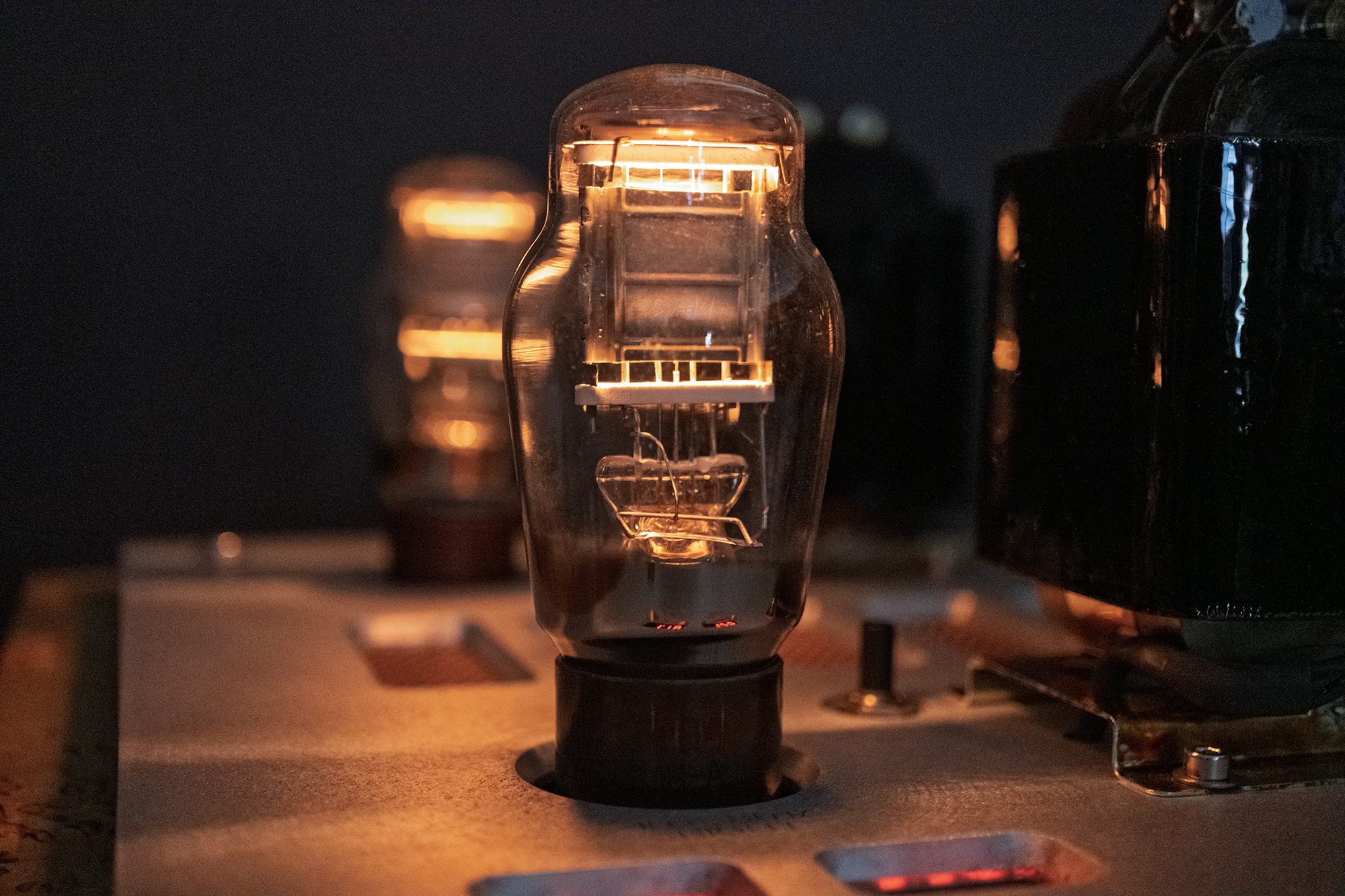
When you also add in the Treehaus combo’s timbral riches, music becomes nearly real and good enough to eat.
Lucrecia Dalt’s latest, A Danger to Ourselves, released on RVNG Intl. last week, is a tropical rain forest in sound, all dense, moist, and mysterious. Dalt seems to revel in the riches to be found in different sounds and she plays with a very rich palette.
From the liner notes:
Lucrecia Dalt’s A Danger to Ourselves is a fearless reflection on the unfiltered complexities of human connection. Following up her breakthrough 2022 album ¡Ay!, A Danger to Ourselves unravels like a deeply personal conversation; Dalt’s voice is foregrounded and formidable, supported by a lush array of acoustic orchestration and processing, collaged percussive patterns, and an esteemed cast of collaborators including David Sylvian, who co-produced the album with Dalt, Juana Molina, Alex Lazaro, and Camille Mandoki.
Certainly one of my favorite records of the year (so far), the sights, sounds, and mysterious of A Danger to Ourselves unfurled in Barn to such a palpable degree I almost saw the Barn’s red and brown walls turn rain forest green. Once again, the Treehaus/DeVore O/Bronze combo brought this rich music to life in tone, impact, and space making for a dense and finely detailed sound world my imagination could wander around in for the duration without restraint. Of course this also means that bass, even deep bass, is reproduced with appropriate weight and impact filling in the foundation with Barn rattling authority. Delicacy and boom. Nice.
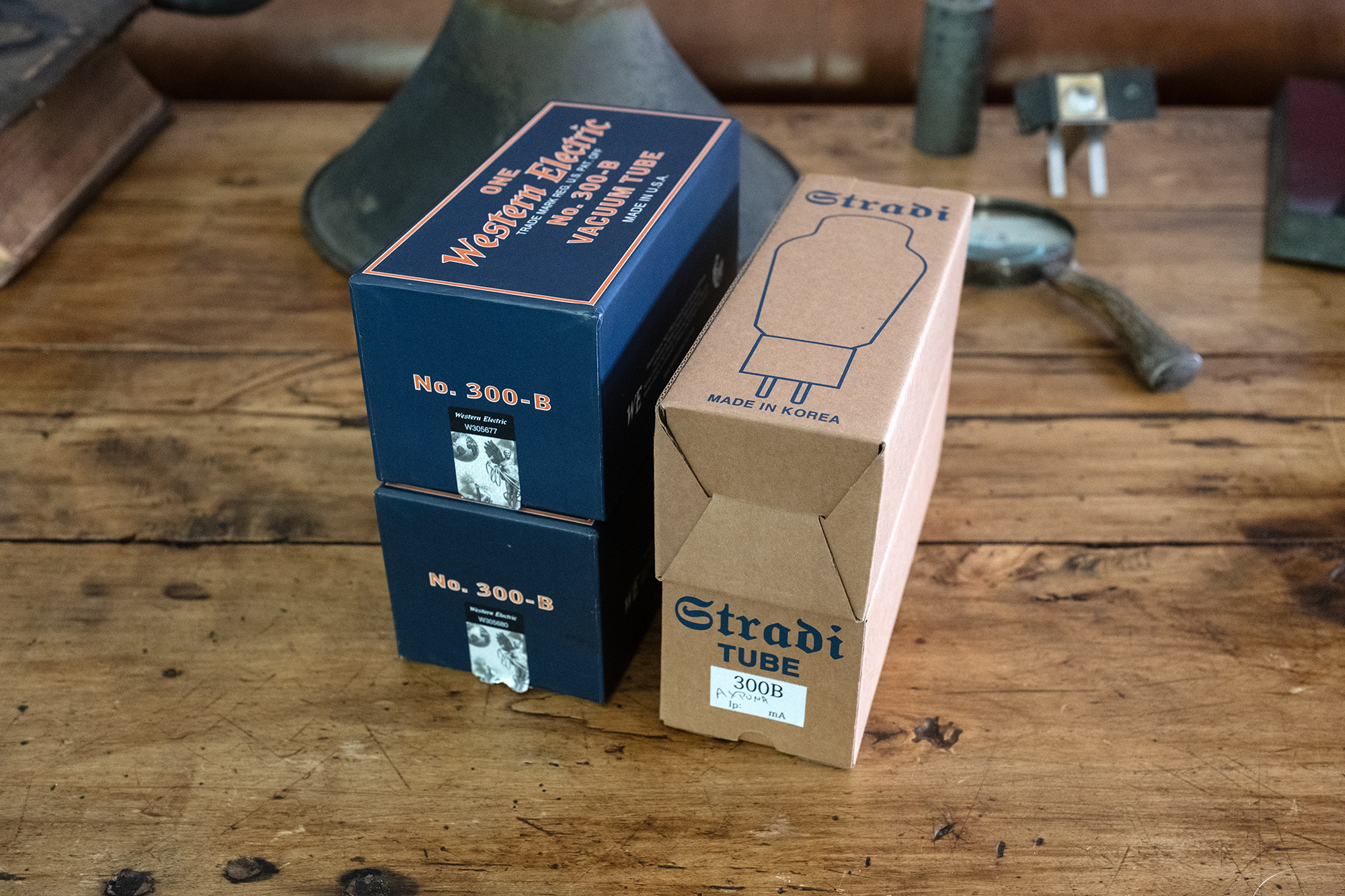
When Treehuas proprietor Rich Pinto delivered and set up the pre/power combo, he installed the Stradi 300Bs and 801A driver tubes in the amp. Over time, I first swapped in the Western Electric (WE) 300Bs and listened for a week or so after which I put in the VT-25A and listened for a few days. I really didn’t need that much time with the Western Electrics because I knew after a few hours that preferred the Stradi 300s by an obvious margin.
I’ll reiterate my tube rolling caveat that says the amp, the system, and my taste are fully in play making the following observations specific to this system context and me. All to say you won’t find me declaring Best 300B! Ever.
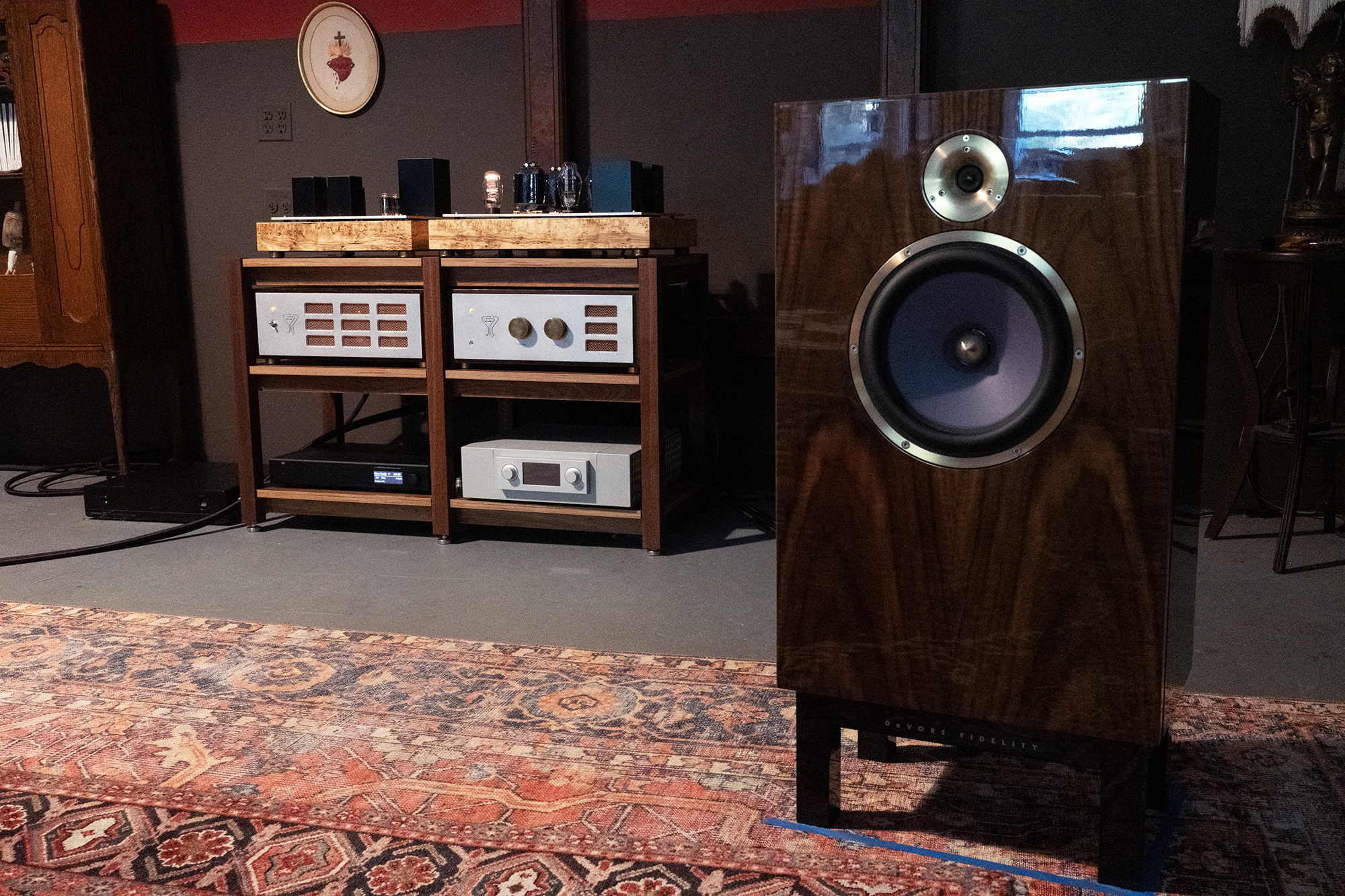
In the Treehaus 300B-2 driving the DeVore O/Bronze with the Weiss Helios DAC in charge, the WE 300Bs made music sound softer, fatter, and fuzzier than the Stradi tubes, all qualities I found less compelling. Perhaps you could say the WE 300Bs are ‘richer’ sounding, and they glow prettier purple to put a positive spin on it, but the Stradi tubes were not only as rich but they also brought with them better bass control, more refinement, increased dynamics, and better resolution. In this context.
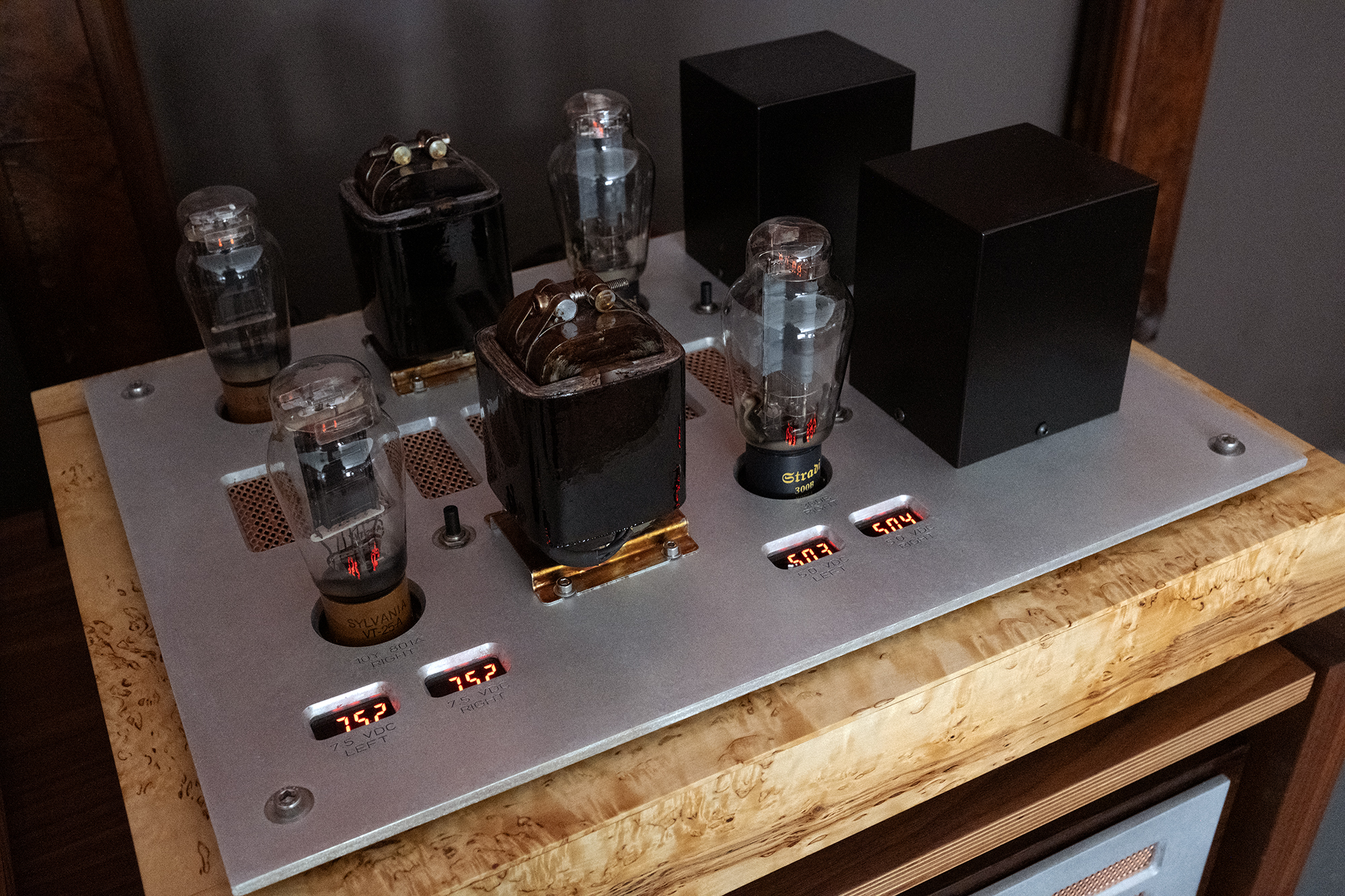
I also preferred the VT-25A to the 801A paired with the Stradi 300Bs as the VT-25A’s brought out a bit more punch, drive, and timbral purity, a kind of richness, that more than tickled my fancy. The 801A certainly made the overall sound image a bit more billowy, airier and more spacious, which I imagine may be just the thing in another system context. But seeing as the O/Bronze are, among many other very wonderful things, kings at presenting the space of a recording about as real and alive as I’ve heard, the VT-25A were a better fit.
“But how are you so sure? Isn’t short-term auditory memory fallible?”
Because I don’t reply on short-term auditory memory. Instead I listen over time to allow my entire listening to music apparatus, which is concerned with many things beyond sounds while having an incredible memory, to play along. And when I swapped out the WE 300Bs with the Stradi 300Bs, using the same track at the exact same volume level, the Stradi-fied Treehaus 300B-2 amp’s bass rattled the Barn’s loose bits to an obvious and greater degree, a completely objective observation.
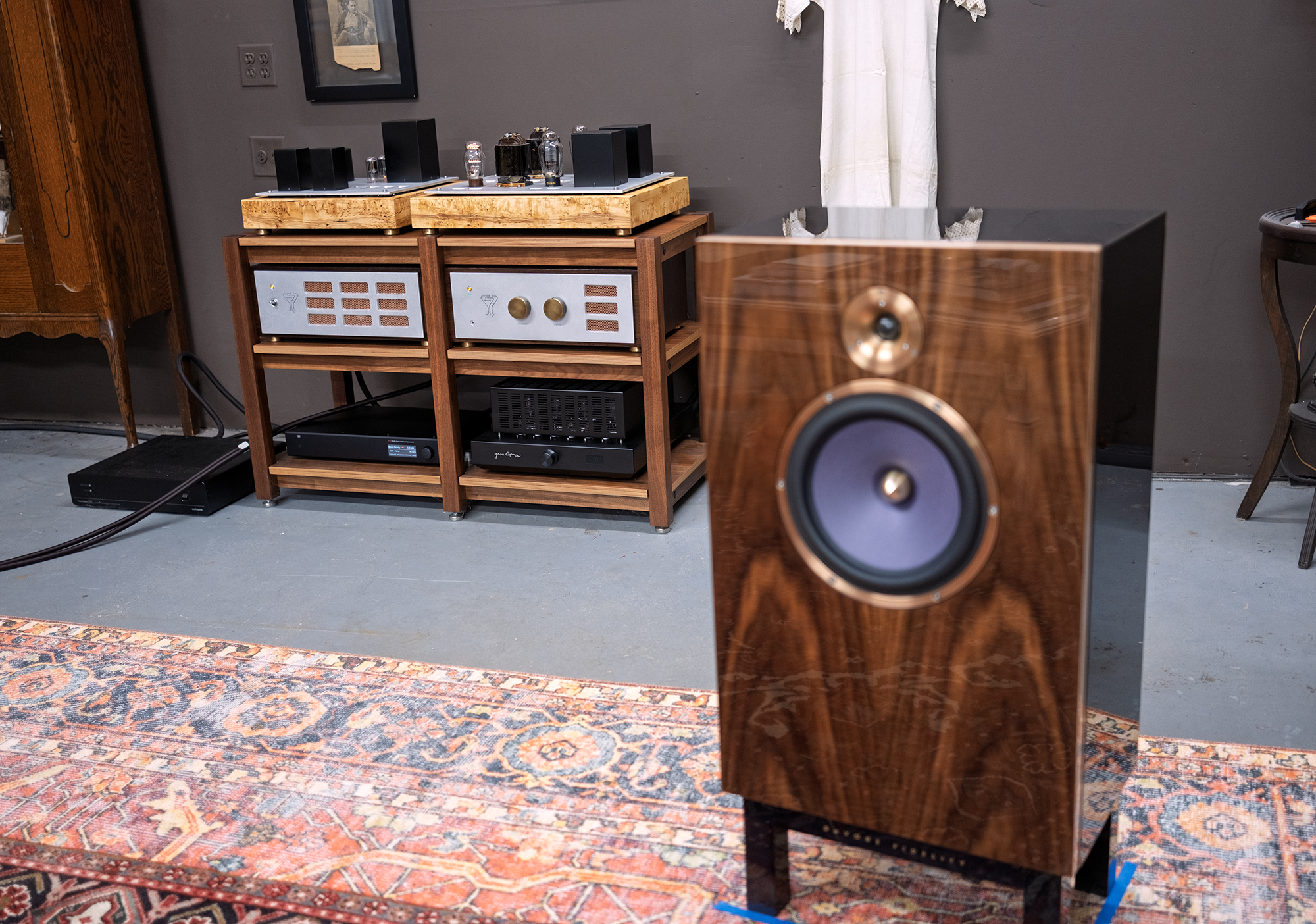
This system with the Treehaus combo powering the O/Bronze on the Barn’s B-Side made listening to music an adventure in sound, the kind of quality in reproduction that makes the fleeting musical moment feel precious and vital. “What do I want to listen for?” Was very quickly replaced with “What do I want to get lost within,” the kind of hifi that highlights the real value of streaming where we can explore an endless library of music for as long as time allows and I took full advantage of my time with the Treehaus The Preamplifer and 300B-2 SET Amplifier wandering around too many albums to list here. Think of each day beginning with listening that felt like diving into clear fresh water just cold enough to startle and delight.
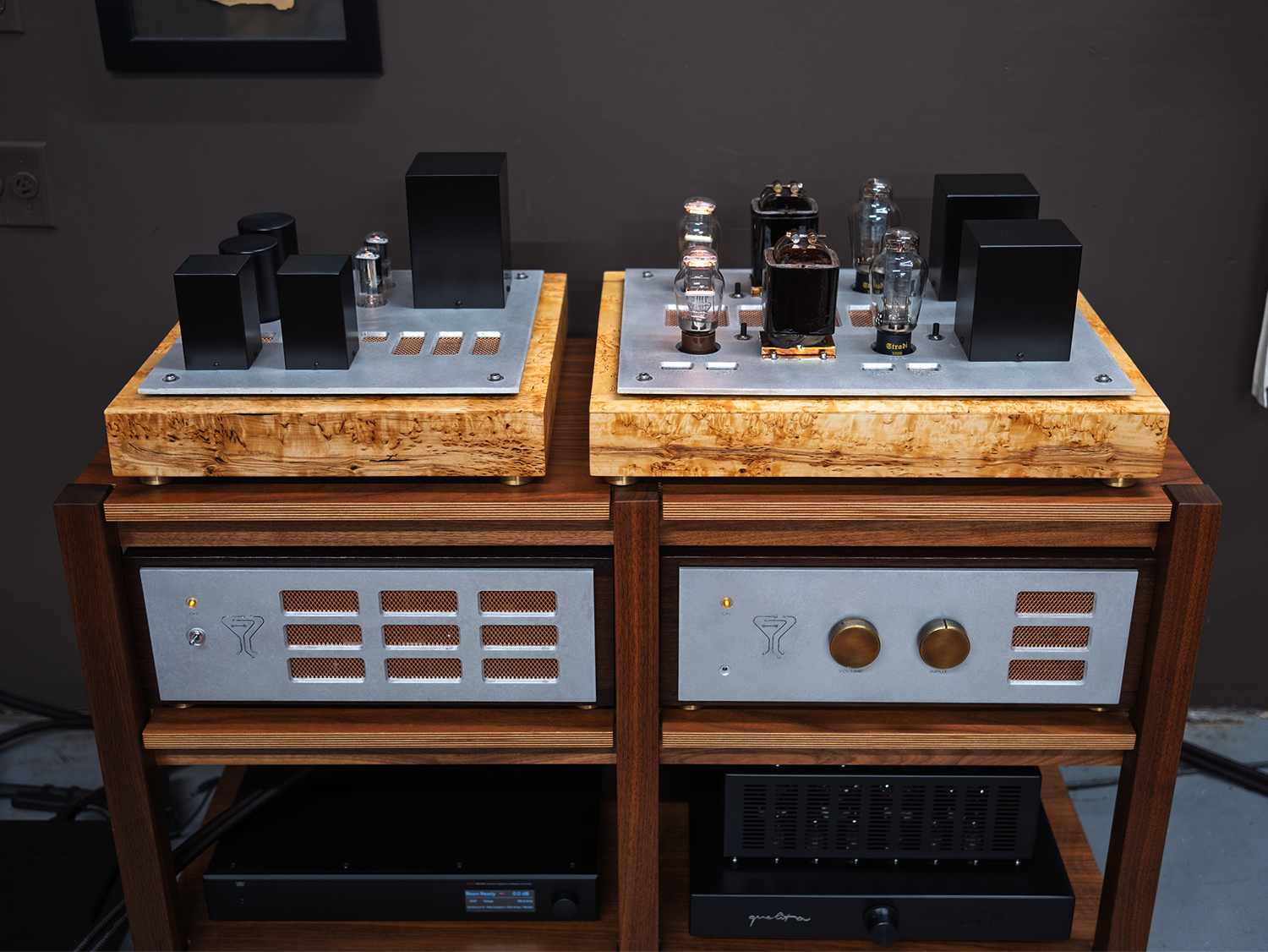
The Treehaus Audiolab The Preamplifer and 300B-2 SET Amplifier have many strengths when it comes to sonic attributes that seamlessly transcend mere itemized qualities of reproduction but this combo’s real value lies in delivering the entire package. Bravo!

Treehaus Audiolab Preamplifier: $24,000
Treehaus Audiolab 300B-2 SET Amplifier: $30,000
Company Website: Treehaus Audiolab
The Preamplifier Specifications
- Two enclosure design (Signal section and Power supply section).
- Finemet TVC (transformer volume control) with stepped attenuation. Remote option available.
- Toroid power transformer with CLCLC power supply and Finemet choke in final stage.
- 6CJ3 tube rectification.
- 4P1L DHP vacuum tube operating with filament bias utilizing Coleman Regulators.
- edenSound Terrastone and IsoDamp vibration mitigation.
- Finemet output transformer with high/low gain switch.
- Line Inputs: 3 to 5 RCA Single-Ended.
- Line Outputs: 2
- Input impedance: Min 40K.
- Maximum output voltage: 4Vrms @ 2Vrms input (low gain), 8Vrms @2Vrms input (high gain).
- THD: lower than 0.05% at 4Vrms output (low gain), lower than 0.05% at 8Vrms output (high gain).
- Frequency response: 20-20Khz +/- -0.2dB.
- S/N ratio: ≥ 90db.
- Output gain: 6.5dB/ 13dB (user selectable switch)
300B-2 SET Amplifier Specifications
- Two Enclosure Design
- 10Y/801A interstage driving 300B
- GOSS Core Power Transformer and Finemet Chokes CLCLC
- 6CJ3 Damper Diode Pair Rectification
- Finemet Interstage (large) and Output Transformers.
- Coleman filament regulators with individual DC supplies
- Mundorf HV+, Film and Oil Power Capacitors
- Amphenol MIL-SPEC Power Umbilical
- Input Sensitivity: 6W @4VRMS
- THD: 2.2% @6W
- S/N: 95dB @6W
- Frequency Response: 20-20,000Hz +/-0.5dB
